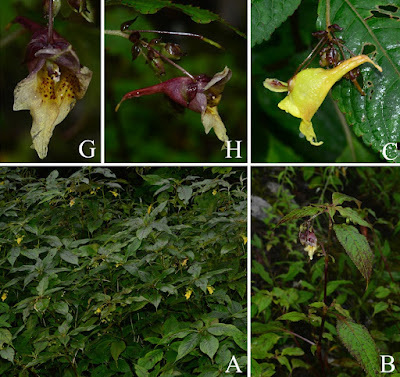 |
in Hill, Fraser, Gao, ... et Butler, 2022. |
Highlights
• A robust phylogeny is resolved for 205 species of Papuan microhylid frogs.
• The problematic backbone is resolved revealing ancient adaptive radiation.
• Extensive cryptic diversity is discovered, putting all “widespread” species into doubt.
• Present-day communities are ecologically diverse with up to 5 lifestyles and 14 species.
• Communities are randomly assembled suggesting adaptive and non-adaptive radiation.
Abstract
The microhylid frogs of the New Guinea region are the largest and most ecologically diverse subfamily (Asterophryinae) of one of the largest anuran families in the world and can live in communities of up to 20 species. While there has been recent progress in resolving the phylogenetic relationships of Asterophryinae, significant uncertainties remain, impeding further progress in understanding the evolution of microhabitat use, parental care, and life history variation in this group. In particular, the early divergences at the base of the tree remain unclear; as does the monophyly of some genera; and recent studies have discovered that species with wide geographic distribution are instead cryptic species complexes. In this study, we fortified geographic sampling of the largest previous phylogenetic effort by sequencing an additional 62 taxa and increased data quality and quantity by adding new layers of data vetting and by filling in previously incomplete loci to the five gene dataset (2 mitochondrial, 3 nuclear protein-coding genes) to obtain a dataset that is now 99% complete in over 2400 characters for 233 samples (205 taxa) of Asterophryinae and 3 outgroup taxa, and analyzed microhabitat use data for these taxa from field data and data collected from the literature. Importantly, our sampling includes complete community complements at 19 sites as well as representatives at over 80 sites across New Guinea and its offshore islands. We present a highly resolved molecular phylogeny which, for the first time, has over 95% of nodes supported (84% highly supported) whether using Maximum Likelihood or Bayesian Inference, allowing clarification of all genera (whether monophyletic or clearly not), their sister genera relationships, as well as an age estimate for the Asterophryinae at approximately 20MYA. Early generic diversification occurring between 17 and 12 MYA gave rise to a surprising diversity of about 18 genera as well as the 5 putative microhabitat types. Our tree reveals extensive cryptic diversity calling any widespread taxa into doubt, and clearly demonstrates that complex multispecies communities of Asterophryinae are ecologically diverse, are numerous, and of ancient origin across New Guinea. We discuss the implications of our phylogeny for explaining the explosive diversification of Asterophryinae as the result of adaptive radiation, niche conservatism, and non-adaptive radiation.
Keywords: Community assembly, Phylogenetics, Diversification, Adaptive radiation, Anura, Microhylidae, Asterophryinae, Cryptic species
Ethan C. Hill, Claire J. Fraser, Diana F. Gao, Mary J. Jarman, Elizabeth R. Henry, Bulisa Iova, Allen Allison and Marguerite A. Butler. 2022. Resolving the Deep Phylogeny: Implications for early Adaptive Radiation, Cryptic, and Present-day Ecological Diversity of Papuan Microhylid Frogs. Molecular Phylogenetics and Evolution. 177, 107618. DOI: 10.1016/j.ympev.2022.107618









































